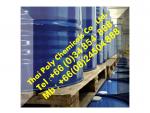POM, Polyacetal, โพลีอะซีทัล, โพลีอะซีแทล, Polyformaldehyde, โพลีฟอร์มัลดีไฮด์ |
฿1 |
|
ชื่อผู้ประกาศ : Thailandchemicals เบอร์โทรศัพท์ : 034854888, 034496284 โทรศัพท์มือถือ : 0824504888, 0800160016 ที่อยู่ : 36/5 ม.9 ต.นาดี อ.เมืองสมุทรสาคร ร้าน Thailand Chemicals |
นำเข้าและจำหน่าย POM, Polyacetal,
โพลีอะซีทัล, โพลีอะซีแทล, Polyformaldehyde, โพลีฟอร์มัลดีไฮด์
สอบถามข้อมูลเพิ่มเติมได้ที่ ฝ่ายขาย บริษัท ไทยโพลีเคมิคอล จำกัด โทรศัพท์ 034854888, 034496284 มือถือ 0824504888, 0800160016 โทรสาร 034854899,
034496285
โพลิอะซีทัล, Polyacetal, โพลิออกซิเมทิลีน, Polyoxymethylene, POM
โพลิอะซีทัล (Polyacetal) โดยมีชื่อเรียกอื่น ๆ
ว่า โพลิออกซิเมทิลีน Polyoxymethylene (POM) หรือ
โพลิฟอมัลดิไฮด์ (polyformaldehyde) ซึ่งPOM เป็นโพลิเมอร์ประเภทเทอร์โมพลาสติกวิศวกรรม (Engineering
Thermoplastic) สามารถแบ่งออกเป็น 2 ชนิด คือ โฮโมโพลิเมอร์ (Homopolymer)
และโคโพลิเมอร์ (Copolymer) POM เป็นพลาสติกวิศวกรรม
(Engineering Plastic) ที่มีผิวลื่นเป็นมัน
ทนต่อการเสียดสีได้ดี มีความแข็งแรงสูง และมีความยืดหยุ่นตัวดี คุณสมบัติเด่นของ POM
เช่น การทนต่อสารเคมี การดูดซับน้ำค่อนข้างต่ำ
มีความคงสภาพของรูปทรงที่ดี มีคุณสมบัติทางไฟฟ้าที่ดี POM จึงถูกนำไปใช้ในงานอุตสาหกรรมที่หลากหลาย
อาทิ ชิ้นส่วนอิเล็กทรอนิกส์ ยานยนต์ เครื่องจักรกล และชิ้นส่วนในงานอุตสาหกรรมต่าง ๆ ที่มีการเคลื่อนไหวและเสียดทาน เช่น เฟือง ซิป
โพลิอะซีทัล, Polyacetal, โพลิออกซิเมทิลีน, Polyoxymethylene, POM
เป็นพอลิเมอร์ประเภทเทอร์โมพลาสติกวิศวกรรม
(Engineering Thermoplastic) สังเคราะห์ได้จากฟอร์มัลดีไฮด์ ซึ่งอาจรู้จักกันในชื่ออื่นๆได้แก่ พอลิออกซีเมทิลีน (polyoxymethylene, POM) หรือพอลิฟอร์มัลดิไฮด์สารชนิดนี้สามารถแบ่งออกเป็นสองชนิด คือ โฮโมพอลิเมอร์ และ โคพอลิเมอร์ สารดังกล่าวมีลักษณะทึบแสง
สีขาวขุ่นมัวคล้ายน้ำนม มีค่าความต้านทานแรงดึง (tensile strength) และค่าความแข็งตึง (stiffness) ที่สูงมากมีผิวลื่นเป็นมัน มีสปริง ทนต่อการเสียดสีได้ดี
ทนต่อแรงกระแทกแม้อยู่ในอุณหภูมิต่ำ มีความแข็งแรงสูง มีสมบัติการนำไฟฟ้าที่ดี
มีการดูดซับน้ำที่ค่อนข้างต่ำ ทนต่อสารเคมี
สามารถสัมผัสกับอาหารได้โดยไม่เกิดการละลายหรือปนเปื้อน นอกจากนี้ยังมีความยืดหยุ่นได้ดีทั้งในที่อุณหภูมิสูงและต่ำจึงทำให้มันสามารถคงสภาพของรูปทรงที่ดีซึ่งเป็นจุดเด่นที่เหมาะอย่างยิ่งที่จะนำมาทดแทนโลหะ
เช่น อะลูมิเนียม ทองเหลือง สังกะสี เหล็ก ตัวอย่างการนำไปใช้งาน ด้วยสมบัติดังกล่าวพอลิอะซีทัลจึงนิยมนำมาใช้ผลิตชิ้นส่วนที่ต้องการความแม่นยำสูง
(Precision part) ไม่ว่าจะเป็นชิ้นส่วนอิเล็กทรอนิกส์ยานยนต์ เครื่องจักรกล
หรือชิ้นส่วนในงานอุตสาหกรรมต่างๆที่มีการเคลื่อนไหวและเสียดทาน เช่น เฟือง ซิป
ชิ้นส่วนของปั๊มวาล์ว ลูกกลิ้ง คาบูเรเตอร์เกียร์ หัวสเปรย์ สปริง โซ่ ตลับลูกปืน
หรือแม้แต่ส่วนประกอบของใบพัดเครื่องซักผ้า
ซึ่งแต่เดิมมักจะทำจากโลหะที่มีข้อเสียคือน้ำหนักมาก เสียงดัง
ต้องหล่อลื่นด้วยน้ำมัน ก่อให้เกิดปัญหาการเปรอะเปื้อนและสึกกร่อนง่าย
นอกจากนี้ยังสามารถนำไปใช้ในกระบวนการผลิตแบบฉีด แบบรีด
หรือจะนำไปแปรรูปโดยใช้เครื่องกลึง ตัด เจาะ หรือเจียระไนได้อีกด้วยPolyoxymethylene (POM), also known
as acetal, polyacetal and polyformaldehyde, is an
engineering thermoplastic used in precision parts requiring high stiffness, low friction and excellent dimensional stability. As with many other synthetic polymers, it is produced by different chemical firms with slightly different formulas and sold variously by such names as Delrin, Celcon, Duracon and Hostaform. Typical applications for injection-molded POM include high performance engineering components such as small gear wheels, ball bearings, ski bindings, fasteners, knife handles, lock systems, and model rocket launch buttons. The material is widely used in the automotive and consumer electronics
Development. Polyoxymethylene was
discovered by Hermann Staudinger, a German chemist who received the 1953 Nobel Prize in Chemistry. He had studied the polymerization and structure of POM in the 1920s while researchingmacromolecules, which he characterized as polymers. Due to problems with
thermal stability, POM was not commercialized at that time.Around 1952
research chemists at DuPont synthesized a version of POM, and in 1956
the company filed for patent protection of the homopolymer. DuPont credits R N by MacDonald and coworkers describe the preparation of high molecular weight these lack sufficient thermal stability to be commercially viable. The inventor anhydride converts the readily depolymerizable hemiacetal into a thermally
DuPont completed construction of a
plant to produce its own version of acetal resin, named Delrin at Parkersburg, Celanese completed its own research. Shortly thereafter, in a limited partnership with the Frankfurt firm Hoechst AG, a factory was built in Kelsterbach, Hessen; Hostaform joining it a year later. Both remain in production under the auspices of Ticona (a subsidiary of Celanese), and are sold as parts of a product group
Properties
POM is characterized by its high
strength, hardness and rigidity to ?40 ?C. POM is intrinsically opaquewhite, due to its high crystalline composition, but it is available in all
colors. POM has a density of ? = 1.410?1.420 g/cm?.POM homopolymer is a
semi-crystalline polymer (75?85% crystalline) with a melting point of 175 ?C. The POM copolymer has a slightly lower melting point of 162?173 ?C.POM is a tough material with a
very low coefficient of friction. However, it is susceptible to polymer
degradation catalyzed by acids, which is why both polymer types are stabilized.
Both homopolymer and copolymer have chain end groups (introduced via end
capping) which resist depolymerization. With the copolymer, the second unit
normally is a C2 (ethylene glycol) or C4 (1,4-butanediol) unit, which is introduced via its cyclic acetal (whichcan be made from the diol and formaldehyde) or cyclic ether (e.g. ethylene
oxide). These units resist chain cleavage, because the O-linkage is now no
longer an acetal group, but an ether linkage, which is stable to hydrolysis.
POM is sensitive to oxidation, and an anti-oxidant is normally added to molding
grades of the material.POM advantages:
High abrasion resistance
Low coefficient of friction
High heat resistance
Good electrical and dielectric properties
Low water absorption
Production
Different manufacturing processes
are used to produce the homopolymer and copolymer versions of POM. Homopolymer.
To make polyoxymethylene homopolymer, anhydrous formaldehyde must be generated.
The principal method is by reaction of the aqueous formaldehyde with an alcohol
to create a hemiformal, dehydration of the hemiformal/water mixture (either by
extraction or vacuum distillation) and release of the formaldehyde by heating
the hemiformal. The formaldehyde is then polymerized by anionic catalysis and
the resulting polymer stabilized by reaction with acetic anhydride. A typical
example is DuPont?s Delrin.Copolymer. To make
polyoxymethylene copolymer, formaldehyde is generally converted to trioxane
(specifically 1,3,5-trioxane, also known as trioxin). Thisis done by acid catalysis (either sulfuric acid or acidic ion exchange resins)
followed by purification of the trioxane by distillation and/or extraction to
remove water and other active hydrogen containing impurities. Typical
copolymers are Hostaform from Ticona and Ultraform from BASF. The co-monomer is
typically dioxolane but ethylene oxide can also be used. Dioxolane is formed by
reaction of ethylene glycol with aqueous formaldehyde over an acid catalyst.
Other diols can also be used. Trioxane and Dioxolane are polymerized using an
acid catalyst, often boron trifluoride etherate, BF3 OEt2. The polymerization can take place in a non-polar solvent (inwhich case the polymer forms as a slurry) or in neat trioxane (e.g. in an
extruder). After polymerization, the acidic catalyst must be deactivated and
the polymer stabilized by melt or solution hydrolysis in order to remove the
unstable end groups. Stable polymer is melt compounded, adding thermal and
oxidative stabilizers and optionally lubricants and miscellaneous fillers.Fabrication
POM is supplied in a granulated
form and can be formed into the desired shape by applying heat and pressure.
The two most common forming methods employed are injection molding and
extrusion. Rotational molding and blow molding are also possible.Typical applications for
injection-molded POM include high performance engineering components (e.g. gear
wheels, ski bindings, fasteners, lock systems) and the material is widely used
in the automotive and consumer electronics industry. There are special grades
that offer higher mechanical toughness, stiffness or low friction/ wear
properties.POM is commonly extruded as
continuous lengths of round or rectangular section. These sections can be cut
to length and sold as bar or sheet stock for machining.Machining
When supplied as extruded bar or
sheet, POM may be machined using traditional methods such as turning, milling,
drilling etc. These techniques are best employed where production economics do
not merit the expense of melt processing. The material is free-cutting, but
does require sharp tools with a high clearance angle. The use of soluble
cutting lubricant is not necessary, but is recommended.Because the material lacks the
rigidity of most metals, care should be taken to use light clamping forces and
sufficient support for the work piece.Machined POM can be dimensionally
unstable, especially with parts that have large variations in wall thicknesses.
It is recommended that such features are ?designed-out? e.g. by adding fillets
or strengthening ribs. Annealing of pre-machined parts before final finishing
is an alternative. A rule-of-thumb is that in general, small components
machined in POM suffer from less warping.Bonding
POM is typically very difficult to
bond. Special processes and treatments have been developed to improve bonding.
Typically these processes involve surface etching, flame treatment or
mechanical abrasion.Typical etching processes involve
chromic acid at elevated temperatures. DuPont has a patented process for
treating acetal homopolymer called satinizing which creates anchor points on
the surface, giving an adhesive something to grab. There are also processes
involving oxygen plasma and corona discharge.Once the surface is prepared, a
number of adhesives can be used for bonding. These include epoxies,
polyurethanes, and cyanoacrylates. Epoxies have shown 150-500 psi shear strength on mechanically abraded surfaces and 500-1000psi on chemically treated surfaces. Cyanoacrylates are useful for bonding to
metal, leather, rubber and other plastics.Solvent welding is typically unsuccessful on acetal polymers, due
to the excellent solvent resistance of acetal.Thermal welding through various
methods has been used successfully on both homopolymer and copolymer.Usage
Mechanical gears, sliding and guiding
elements, housing parts, springs, chains, screws, nuts, fan wheels, pump parts,
valve bodies.Electrical Engineering: insulators, bobbins,
connectors, parts for electronic devices such as televisions, telephones, etc.Vehicle: Fuel sender unit, Light stock
(including shifter for light, turn signal), power windows, door lock systems,
articulated shells.Model: Model Railway parts, such as bogies and
handle bars. POM breaks under load slightly less than ABS, but in bright
translucent colors, and not paintable.Medical: insulin pen, Metered dose inhalers
(MDI) Furniture: hardware, locks, handles, hinges.
Construction: Structural Glass - pod holder
for point Packaging: aerosol cans, vehicle tanks.
Sports: Paintball accessories. It is often
used for machined parts of paintball markers that do not require the strength
of aluminum, such as handles and reciprocating bolts. POM is also used in
airsoft guns, in order to reduce the noise of the piston. Clothing: zippers.
Music: picks, Irish flutes, Bagpipes, Practice
chanters, harpsichord plectra, tuba mouthpieces, tips of some drum sticks.Dining: Fully automatic coffee brewers; knife
handles (particularly folding knives)The Food and Drug Administration has approved
Delrin for use in the food industry.[citation needed]Horology: Watch bracelets (e.g. IWC Porsche
Design 3701)Hobbies: Radio-controlled helicopter Main
gear, landing skid, yo-yo's, etcAcetal resins are sensitive to
acid hydrolysis and oxidation by agents such as mineral acids and chlorine. POM homopolymer is also susceptible to alkaline attack and is more susceptible to degradation in hot water. Both POM homopolymer and copolymer are stabilized to mitigate these types of degradation. Thus low levels of chlorine in potable sufficient to cause stress corrosion cracking to develop, a problem which has been experienced in both the USA and Europe in domestic and commercial water supply systems. Defective mouldings are most sensitive to cracking, but normal
Widespread failure of acetal
mouldings in potable and hot water supplies resulted in one of the largest class actions in the USA when acetal plumbing fittings cracked and caused flooding of homes, a problem exacerbated by similar problems with polybutylene
In chemistry applications, whilst
the polymer is often suitable for the majority of glassware work, it can succumb to catastrophic failure. An example of this would be using the polymer clips on hot areas of the glassware (such as a flask to column, column to head or head to condenser joint during distillation). As the polymer is sensitive to both chlorine and acid hydrolysis, it may perform very poorly when exposed to the reactive gases, particularly hydrogen chloride. Failures in this latter instance can occur with seemingly unimportant exposures from well sealed joints, and do so without warning and rapidly (the component will split or fall apart). This can be a significant health hazard as the glass may open or smash.
สอบถามข้อมูลเพิ่มเติมได้ที่ ฝ่ายขาย
Thai Poly Chemicals Co., Ltd.
บริษัท ไทยโพลีเคมิคอล จำกัด
ที่อยู่36/5 ม.9 แขวง/ตำบลนาดี
เขต/อำเภอเมืองสมุทรสาคร
จังหวัดสมุทรสาคร รหัสไปรษณีย์74000Tel.: 034854888,
034496284
Fax.: 034854899,
034496285
Mobile: 0824504888,
0800160016
Website :
www.thaipolychemicals.comEmail1 : thaipolychemicals@hotmail.com
Email2 : info@thaipolychemicals.com
POMPolyacetalโพลีอะซีแทลโพลีอะซีทัลโพลีฟอร์มัลดีไฮด์Polyformaldehyde





















